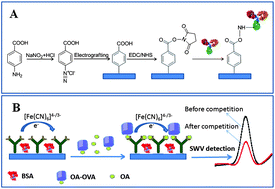A graphene-based electrochemical competitive immunosensor for the sensitive detection of okadaic acid in shellfish†
Abstract
A novel

* Corresponding authors
a
Institut national de la recherche scientifique, Centre – Energie, Matériaux et Télécommunications, 1650, Boul. Lionel Boulet, Varennes, Québec, Canada
E-mail:
zourob@emt.inrs.ca
Fax: +1-450-929-8102
Tel: +1-514-228-6981
A novel

 Please wait while we load your content...
Something went wrong. Try again?
Please wait while we load your content...
Something went wrong. Try again?
S. Eissa and M. Zourob, Nanoscale, 2012, 4, 7593 DOI: 10.1039/C2NR32146G
To request permission to reproduce material from this article, please go to the Copyright Clearance Center request page.
If you are an author contributing to an RSC publication, you do not need to request permission provided correct acknowledgement is given.
If you are the author of this article, you do not need to request permission to reproduce figures and diagrams provided correct acknowledgement is given. If you want to reproduce the whole article in a third-party publication (excluding your thesis/dissertation for which permission is not required) please go to the Copyright Clearance Center request page.
Read more about how to correctly acknowledge RSC content.
 Fetching data from CrossRef.
Fetching data from CrossRef.
This may take some time to load.
Loading related content
